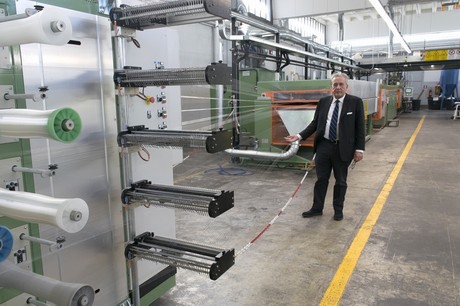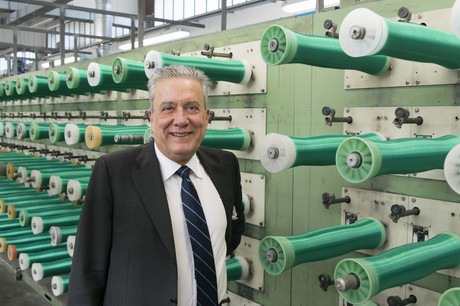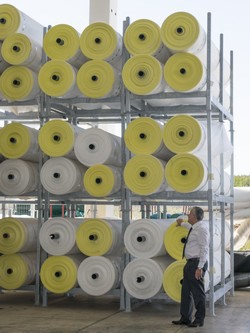Th
· increase in the yield of cultivated land by multiplying cycles per season and protecting from atmospheric agents
· reduction of pesticide use, with equal protection against the most aggressive insects for each individual crop
· improvement of the microclimate, through the control of ventilation, temperature and air quality as well as through the mitigation of the direct impact of rain on the foliage and on the fruits and the proliferation of bacteria and fungi
· optimization of plant irradiation conditions to achieve the right amount and quality of light (intensity, diffusion and color).

Arrigoni agrotextiles are made from high density polyethylene, whose production is optimized to guarantee long life (ten years) at the most severe atmospheric conditions.
This last characteristic is decisive for ensuring the absence of a direct environmental impact linked to the use of nettings in agriculture. Although agrotextiles are made of plastic material (polyethylene), their characteristics and the advanced manufacturing system allow that their application in the field nullifies (and actually exceeds) the carbon footprint linked to its manufacture. Unlike what could be expected, Arrigoni agrotextiles reveals that their use brings advantages to the environment.

It is well known that the so-called "climate-changing gases" or "greenhouse gases" among which the most widespread is carbon dioxide (CO2) are those that generate the rise in temperature of the planet Earth. They are produced by almost all hum an activities and are particularly present in the combustion of hydrocarbons, which occurs in any "traditional" process of electricity production. Using specific calculation models and data surveys, it is possible to calculate the CO2 produced by each industrial process (at least because it consumes electricity or directly produced from the combustion of hydrocarbons).
an activities and are particularly present in the combustion of hydrocarbons, which occurs in any "traditional" process of electricity production. Using specific calculation models and data surveys, it is possible to calculate the CO2 produced by each industrial process (at least because it consumes electricity or directly produced from the combustion of hydrocarbons).
The site https://youtu.be/K4Ra2HR27pQ provides interesting information about Earth’s temperature raising related to the increase in population along our recent history.
Positive environmental impact of Arrigoni agrotextiles can be understood, for example, following the fate of 100 grams of an open field agrotextiles. On average it covers and therefore protects 1.5 m² of land, allowing plants to grow undisturbed.
Arrigoni Advanced Agrotextiles are, then, long-term solution (up to 15 years in favorable conditions) for a "noble" purpose = to feed the planet in an ethical and sustainable way.
For more information:
Arrigoni SpA
Via Monte Prato 3
22029 Uggiate Trevano (CO)
Tel.: (+39) 031803200
Fax: (+39) 031803206
Email: info@arrigoni.it
Web: www.arrigoni.it
